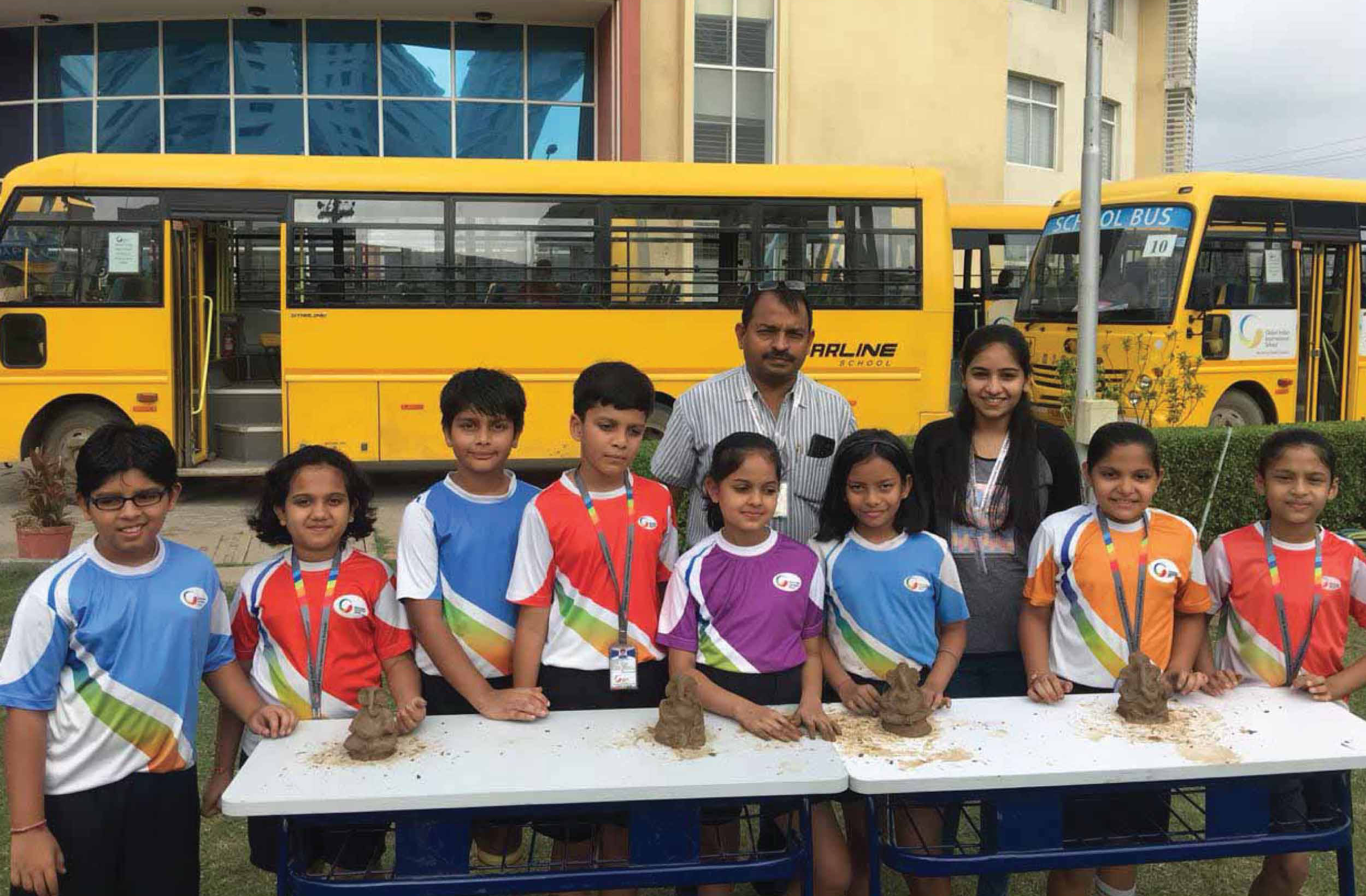
Ganesh Chaturthi, as we all know is a ten day Hindu festival which is celebrated with great pomp and festivity in India.
This year, keeping the rising environmental concerns in mind, GIIS Ahmedabad decided to balance culture and nature. A workshop was organized in September 2018, wherein the children of GIIS Ahmedabad were escorted to the Godrej Garden City - Tivoli cluster to meet the father-daughter duo, Mr. Gautam Raval & Ms. Sally Raval, who were keen to explain to the children the method of creating eco-friendly Ganeshas' for the Ganesh Chaturthi celebrations in their respective society.
Mr. Raval said, "For the past four years, we are trying to help protect the environment by making eco-friendly Ganesha Idols. Even though it takes approximately 15 days to create such idols, it would greatly reduce the impact on natural water bodies and in turn nature, to a huge extent."
They explained to the children the process of creating such idols using soil. The steps were as follows:
- Soil to be taken and sieved, to remove small stones and granular particles.
- The soil should be then soaked in water until it softens and smooths out.
- The wet soil can then be given any shape.
- On the formation of the Ganesha idol, it is then left to dry for about 12-15 days.
- Once dried, it is then layered with Multani Clay.
- It is then colored and decorated.
- The Ganesha Idol is then ready.
The students of Grade 5A, 5B and 5C eagerly joined the fun in order to explore the possibilities of creating idols using soil. They were inspired by this excellent idea which focused on the well-being of the environment while maintaining the respect towards the age long culture and tradition.
After the workshop was over, a number of beautiful masterpieces lay on the table. However, later came the time for the Visarjan, for which the eco-friendly idols were not taken to any river or stream. Rather, a large water drum or a bucket was utilized in the immersion of the idol. In an estimated period of 2-3 days, these idols would completely dissolve in the water, and then the muddy water would be utilized for gardening and plantation purposes.
The entire workshop was a grand success. The students pledged not to purchase idols which were created using harmful artificial materials which in turn put our environment at risk.
They even planned to make Shiva idols for Shivratri and Durga Mata idols for Navratri and promised to inspire the people around them to practice these eco-friendly methods.
- 0
- 0




Comments ({{totalComments}})
Login to post a comment...
{{comments.CommentText}}